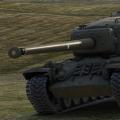During the operation of the tool, minor malfunctions may occur. Every accordionist needs to be able to eliminate them. Malfunctions are external and internal. External: sticking of the key, malfunctions of valves, springs, backlash of buttons, malfunctions in mechanics, breakage of the body and fur. Internal: poor state of the likes on the voice bars, violation of the gaps between the voices and the voices, detuning of the voices.
external faults. Key drop. The main reason for this is dampness. The instrument must be stored in a dry place at a temperature of approximately 4-20°C. When the key sinks, first of all, you should check the serviceability of the springs and the entire mechanism with valves. The valve can move and cling to neighboring ones. If the instrument is slightly damp and individual keys sink, then the rubbing places must be lubricated with a stylus. (It has the property of dry lubrication). Sometimes key stuck right keyboard occurs due to a malfunction of the wire rod on which the keys are strung (it runs along the entire neck).
The sticking of the buttons on the left keyboard is often associated with poor performance of the mechanics. Sometimes it is enough to press the riser, which is attached to the roller closer to the main pusher rod, on which the bass or triad button is located, as the button no longer sinks. The bass buttons of the left keyboard may sink in due to a poor wire connection between the standpipe on the bolster and the valve lever. The wires wear out quickly and need to be replaced. The triad buttons sometimes sink in because the triad pushers are very tight in the mechanics and cling to each other. It also happens that by pressing the grate with our left hand, we press the bedside tables of the fifth or sixth row (the edge of the grate bends inward).
In order to skillfully eliminate external malfunctions, one must be well versed in the structure of mechanics. Depending on its design, various measures can be applied.
If the button on the screw is too loose, remove the screw and screw it into a piece of leather, then screw the button together with the skin and cut the skin along the button plane. Sometimes it's better to replace the button.
Internal faults. They are more difficult to eliminate, it requires a certain skill and special tools.
Often a spoiled like interferes with the good sounding of voices. If the husky is strongly bent, then it can be scraped from the top in the middle and it will straighten up. Often the husky gets stuck inside the voice boxes (under the slats). In such cases, we advise you to remove the resonator and correct the husky, sometimes even cut off its edges.
Often, problems "arise in the voices. For example, the voice "does not sound", because a speck has fallen into the gap between the edge of the window and the voice. More often this happens with the highest, lower, voices of the right button accordion keyboard. Sometimes the voice shifts and rattles - clings to the edge of the window (with poor riveting).
Voices are tuned by experienced musicians. If the voice sounds lower than it should, then the end of the plane of the voice should be sharpened slightly. If it sounds higher, then they undermine the voice closer to its base. In any case, a thin metal plate is placed under the voice.
For self fix. internal malfunctions of the button accordion, you should purchase several files of various shapes with fine notch, emery sticks, a large needle for pulling out the voice and a thin metal plate for putting it under the voice.
To rivet new voices, you need to have pieces of voice steel, scissors with which you could cut voices, a needle for marking voices along the window, a small nail machine with a number of holes different sizes, punch and riveting hammer. You must also have two different size screwdrivers, portable pliers, vices, wood glue, husk and some small spare materials.

The right mechanism of the button accordion Jupiter 64/106 in the process of assembly.
So, the price of the same button accordion, the photo of which flaunts on my profile picture, is 350,000 rubles. Do not look for Swarovski inlay on the case, it is not here. This is an ordinary serial button accordion. The fact is that the production of button accordions is a long, laborious, practically non-automated process.
The time of creation of this musical instrument is longer than the time of bearing a human cub. A long eleven months pass from the moment the work begins until the birth of the finished button accordion. Eight different masters are involved in this difficult process. 80% of all production is done by hand.

Left hand action of a ready-to-select accordion, an experimental version. The process of developing a new tool model. Designer - Lavrov Viktor Petrovich.
If you decide to start making harmonicas, you should not google technical schools and universities that produce the corresponding masters. The creators of these musical instruments will have to be taught from scratch. The process of training one professional takes at least 2-3 years.

For the birth of one button accordion you will need:
Master in Nodal Mechanics
Furrier
Case maker
Resonator maker
Left mechanics assembler
Right mechanics assembler
Tuner
There is not a single person who would combine all these specialties. It is very, very rare to come across a master who is excellent at two of these eight wisdoms, but no more.




The salary of a metropolitan harmonica maker is approximately 35,000 rubles. Taking into account the cost of renting a room, it is better to organize production somewhere in the province, and maybe outside of our vast country.


Production of resonators: installation and gluing of partitions.
Master - Kudar Mikhail Ivanovich


Perhaps the largest harmonica factory is located in Pyongyang. 1100 people work there, of which only 80 are managers, and the rest are workers. Mostly accordions are made there. This factory and the Moscow company "Jupiter" have close friendly and partner relations.



Levers assembly with valves of the right mechanics of bayan Jupiter


Pasting mesh right mechanics.
Master Rybin Mikhail Nikolaevich

Pasting the grid of the right mechanics

Production of the right mechanics of the button accordion Jupiter 4-voice.
Master - Platonov Konstantin Mikhailovich.


This is how a musical instrument is made. The instrument turns out to be very, very nice.


The last step in creating a harmonica is tuning.

The last step is setup
By the way, the accordion is the younger brother of the button accordion, and not vice versa, as many people think.

Accordion. Photo taken by Alexey Bondarenko
In general, there are a great many harmonics. For the meticulous, here is the harmonic classification scheme

And here is Alexey himself in the process of creating his new avatar

Alexey Bondarenko is photographed for a new avatar
At the factory, even the inscriptions on the dust about music

In general, the button accordion is by no means something irrelevant, as they like to say in the vastness of Runet, but a popular, interesting and very serious musical instrument. Here.
In order to exchange experience, as well as help a beginner, I will create a topic where gurus will share the tricks of repairing tools at home, beginners will draw knowledge, and DIYers will brag about new master tools 🙂
ELIMINATE KNOCK AND IMPROVE BAYAN COMPRESSION
Even the highest quality "Scandally" or "Roland" needs elementary care, sooner or later the stuffing and cushioning materials roll down, trample down and dry out, thus the instrument loses its previous properties, stops holding air, extra noise appears in the form of valve knocking or howling of straps. Many of these and other problems can be fixed on your own. For example - knocking and decompression. Knocking is caused by the impact of the valve plate on the soundboard of the instrument. In most cases, the damping properties of the valve husky are very limited, it still transfers the valve shock to the blind quite well. Sometimes manufacturers take care of this and stick the seal not on the valve itself, but on foam rubber, felt or cloth, which is then attached to the valve damper. But over time, this gasket dries out, gets knocked down and corrodes, hence annoying knocks arise, which are sometimes so loud that they can be heard during the game, often they do not even make it possible to glissando. There is a need to eliminate them.
In order to carry out this procedure, you do not need to have a large mathematical base and special skills. All you need is pliers, wire cutters, scissors, a straight razor (or a sharp scalpel / clerical knife), double-sided foam tape and three hours of free time.
Having removed the valve grilles from the soundboard of the button accordion, we see the entire shutter mechanism of the melody: two rows of valves at the top of the neck and one at the bottom. Valves and their levers are various designs, you can read about this in Fadeev's wonderful book "Repair of harmonicas, button accordions and accordions".
After removing excess dust that could accumulate on the deck, you should carefully, one by one, remove the valves from the bipods. It is most convenient to do this if the button accordion has a wooden keyboard with wire bipods, where the valves are mounted on a semi-rigid nipple mount (photo). Having done this procedure, you can set the tool aside and deal directly with the valves.
First of all, you need to carefully separate the husky from the valve plate. If the instrument is old, the husky will fall off by itself, on button accordions produced in the 70s and 80s. the husky was glued to thin foam rubber, which ensured the noiselessness of the melody mechanism, but, unfortunately, after 30 - 40 years, this material tends to decompose, flow and crumble. Sometimes it is easier to tear off the BF glued with glue than what is "fastened" as a result of foam rubber corrosion. Otherwise, if the husky flatly refuses to be removed, but you need to save it, you should use a caution or a scalpel, while carefully pulling back the separated edge of the seal.
After the husky is removed, it is required to clean the surfaces from glue, traces of foam rubber, felt, etc. If the valves are relatively clean, they can be wiped with acetone, thereby washing off the glue and degreasing the surface. This operation can be carried out both for metal and for wooden, plastic and Teflon valves. If foam rubber, felt or other shock-absorbing / sealing material remains on the valve and it is not going to be washed off with acetone, it can be washed in warm (and preferably hot) water with the addition of any detergent. Later, when it gets wet (foam rubber), it can be removed with a brush or knife. If the valve is wooden, you should never wash it, otherwise it will lead! Then you should carefully scrape off the remnants of matter with a knife or on an emery bar.
There are certain requirements for the selection and verification of the button accordion. In the room where the button accordion is checked, the air temperature should be 14-28 degrees, the relative humidity of the air should be 50-60%. If before checking the button accordion was in cold air, then it must be kept at the above temperature for at least 2 hours. Only after such an adaptation of the button accordion to room conditions you can start using it.
Proper checking of the button accordion is a rather complicated process. Its complexity lies in the fact that the button accordion is made of several types of materials: wood, metals, plastics, leather, fabrics. The design of the tool contains many adhesive joints, naturally reacting to temperature changes, high humidity.
All this can affect the sound quality of the button accordion. But checking the button accordion on your own is quite realistic. For example, no one ever taught me to check button accordions. I just took the tool in hand and checked it.
Fur check
We carefully examine the button accordion fur. Having slightly stretched the fur, we carefully examine the fold after fold, paying attention to the quality of the sealing of the adhesive seams. Next, check the air chamber of the tool for leaks. Without pressing the buttons, we stretch the button accordion fur almost to the limit.
We unclench the fur rather slowly. Then we begin to compress the fur. In this case, the instrument should be silent - not hiss or whistle. A small natural bleeding of air through the numerous valves of the mechanism is acceptable.
But, the less bleeding, the better the air chamber. If the air leaves the chamber during the operation of the fur in large quantities, then the button accordion requires repair or refinement.
 Checking the mechanics
Checking the mechanics
It's generally simple. We press the buttons without stretching the fur. The noise of the mechanisms of the left and right keyboard should be minimal. All kinds of jamming, sinking are unacceptable. Button mechanisms should work smoothly, the return of the buttons should be fast enough without squeaking and clanging.
Remember that all kinds of extraneous noise will be a big hindrance when playing in the future. Cool button accordions have special silencers for mechanical noise.
A very important property of button accordion mechanics is the free movement of buttons. Pay special attention to this. Check each button for pressure and return. All buttons of the right and left keyboard should be pressed with approximately the same force and freely return to their original position.
Checking votes is the most important operation. In a good button accordion, the reeds of the voices should sound equally good both when the fur is unclenched and when it is compressed. They should produce a clear sound, without rattling, both with weak operation of the fur (at low volume) and with intensive movement of the fur (at high volume). Each button of the accordion's right keyboard is tested in four modes.
We press the button, stretch the fur with a slight effort. Then we squeeze the fur with the button pressed, also with little effort. At the same time, the sound is quite quiet, even, without any admixture of extraneous noise and uncharacteristic vibrations.
As you can see, checking the button accordion is not so difficult, and you can easily cope with this procedure on your own.





